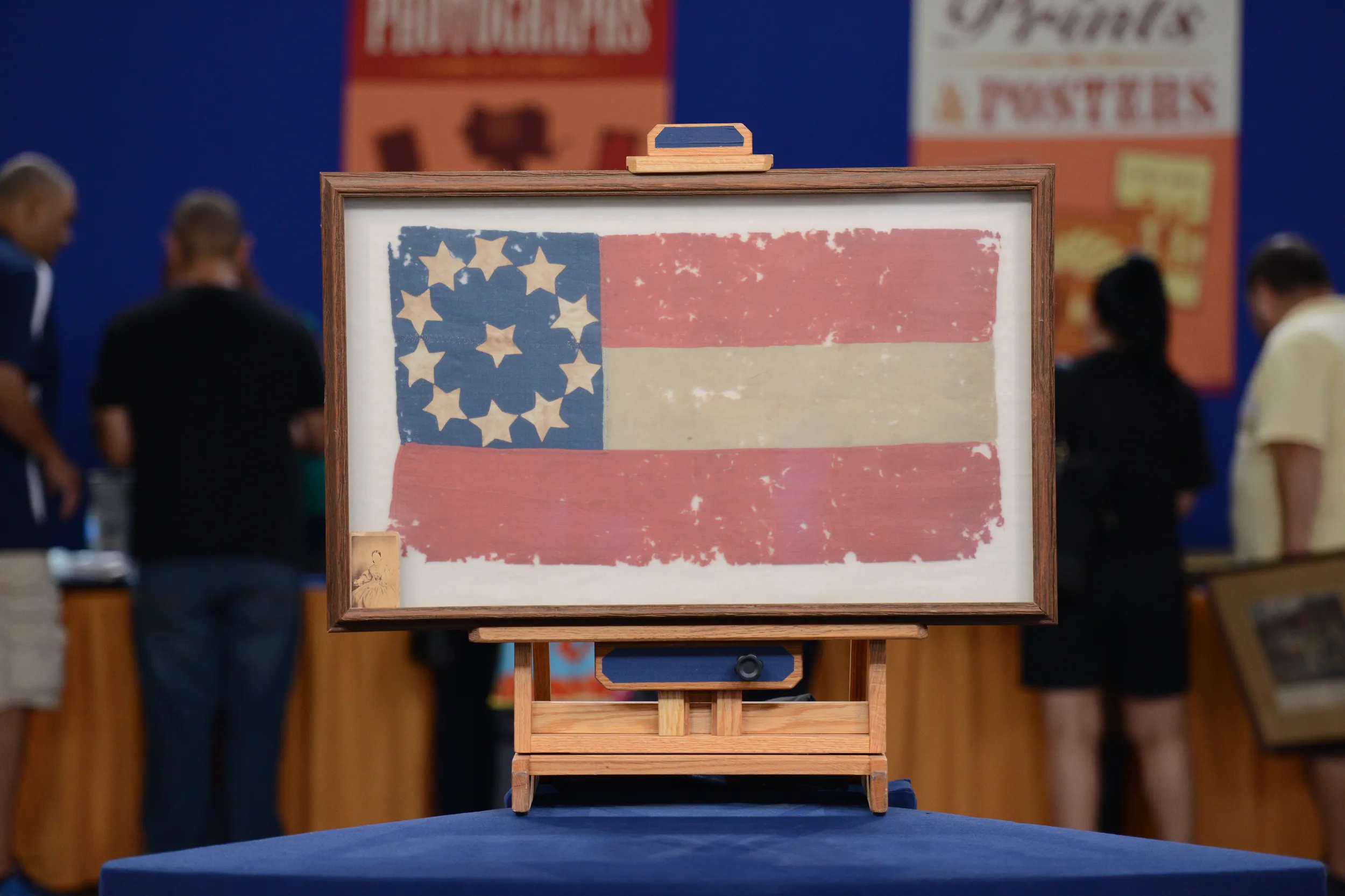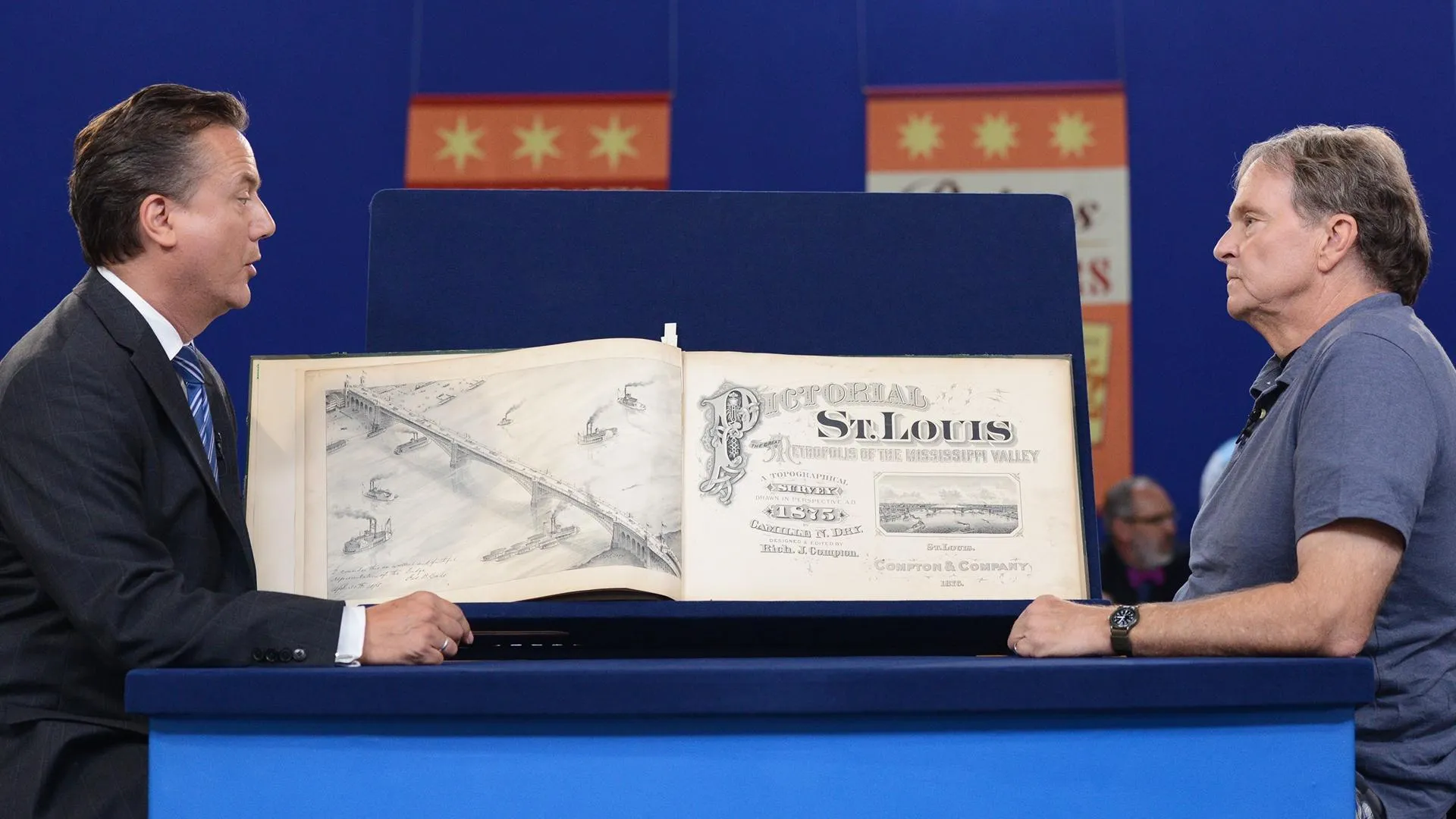GUEST: My distant cousin sewed this. Her name was Mary Hodges. That's a picture of her right there. She sewed this for my great-great-grandfather to carry in the Civil War in 1861.
APPRAISER: So was he from Texas?
GUEST: He was from Texas. I know the unit that he was in was Colonel McCulloch's unit.
APPRAISER: A lot of those Texas organizations served for a short amount of time doing duty in Texas and then their enlistments would expire. And then if they wanted to re-enlist, if they wanted to continue on in Confederate service, they would end up in different organizations that left Texas and went east to the army in Tennessee and elsewhere. It's a rare opportunity to actually know who used it and who actually made the item.
GUEST: My grandmother was smart enough to just document a ton of information on it. We've got letters that my great-great-grandfather wrote to and from Mary Hodges, and it's just fascinating reading about it.
APPRAISER: When we find a flag like this, of course, out in the world, what we want it to be is a battle flag, something that was carried into combat at the head of a regiment of infantry or a squadron of cavalry or something like that.
GUEST: That's what I like to imagine. Whenever I was a kid I liked to imagine these were bullet holes, but I never had any idea really.
APPRAISER: Yeah, I think the moths have done more damage to your flag than the Yankees ever had a chance to do.
GUEST: I believe that.
APPRAISER: A flag like this in this size and with the construction style that it is, most likely was sent to your relative to be his own personal thing to carry.
GUEST: Okay.
APPRAISER: And not necessarily something to be used as a battle flag.
GUEST: That makes perfect sense.
APPRAISER: It just simply wouldn't survive otherwise. But as an original flag, and if you ever do find one out in the world and you're looking, the features of this that stand out immediately are it's completely hand sewn, it's double-sided so that it could actually wave instead of just be hung someplace. If you count them up, you've got 11 stars there. What it tells us is that it would have most likely been sewn after June of 1861, when Tennessee came in. Tennessee was the last state to secede. Sometimes you'll find a first national flag that will have other stars on it in anticipation of the secession of some of the border states like Kentucky and Missouri, but those states never officially seceded and joined the Confederacy.
GUEST: That's fascinating.
APPRAISER: Have you ever had the flag appraised?
GUEST: We had a collector once offer my grandmother $7,000 for it. That was 30 years ago.
APPRAISER: Well, the Civil War market has had some ups and downs since then. In 2014, retail market value for this would be between $10,000 and $15,000.
GUEST: That's beautiful. That's awesome, man. Great to hear.












